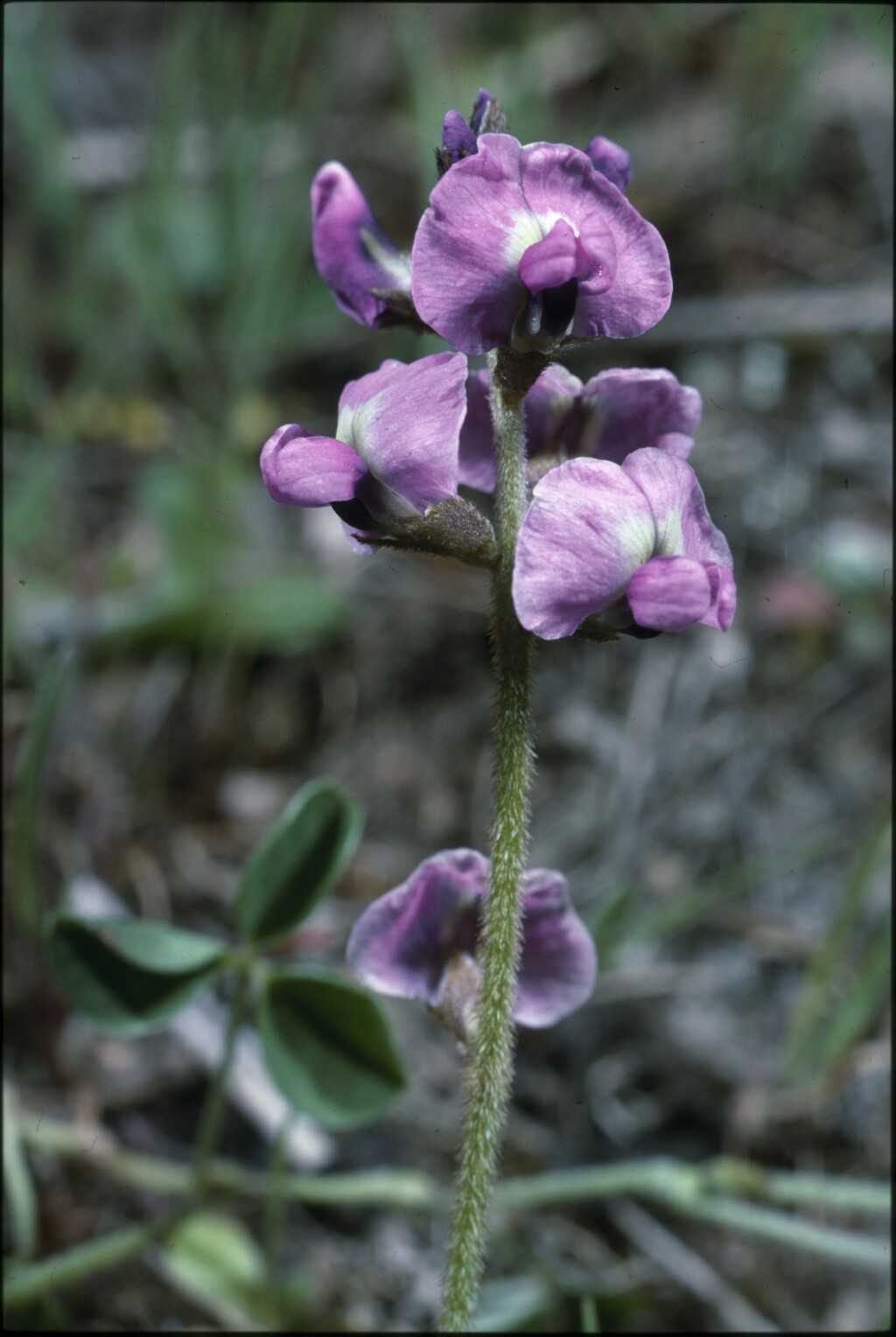Glycine latrobeana
(Meisn.) Benth. Clover GlycineDecumbent or ascending herb; stems short, non-stoloniferous, hirsute to strigose. Leaves palmately trifoliolate, dimorphic, petiole 0.5–5 cm long; leaflets sessile to subsessile; those of mature leaves obovate to more or less orbicular, 5–20 mm long, 4–12 mm wide, thin, apices obtuse to retuse, cuneate; those of immature leaves often elliptic; upper surface glabrous; lower surface silky-strigose; stipules suborbicular to broad-ovate or reniform, 1.5–2 mm long, striate; stipels (subtending lateral leaflets only) minute and caducous; leaflet reticulation often more or less obvious. Racemes 3–8-flowered; peduncles mostly 5–10 cm long, slender, hirsute. Flowers on pedicels 0.5–1 mm long, usually compact and distal on rachis; bract elliptic to broad-ovate, 0.5–1.2 mm long, strigose; calyx 2.5–6 mm long, rusty-strigose, lower 3 teeth about the same length as tube; petals usually deep purple; standard 8–9 mm long; keel shorter than wings. Pod linear-lanceolate, 2–2.5 cm long, c. 5 mm wide, dark brown, strigose; seeds 3–5, ovoid, c. 3 mm long, smooth to minutely muricate, dark brown. Flowers mostly Sep.–Dec.(–Feb. at higher altitudes).
Wim, GleP, Brid, VVP, VRiv, GipP, OtP, WaP, Gold, CVU, GGr, DunT, NIS, EGL, HSF, HNF, Strz, VAlp. Also SA, NSW, Tas. Widespread but of sporadic occurrence and rarely encountered. Grows mainly in grasslands and grassy woodlands.
Jeanes, J.A. (1996). Fabaceae. In: Walsh, N.G.; Entwisle, T.J., Flora of Victoria Vol. 3, Dicotyledons Winteraceae to Myrtaceae, pp. 663–829. Inkata Press, Melbourne.
 Spinning
Spinning
